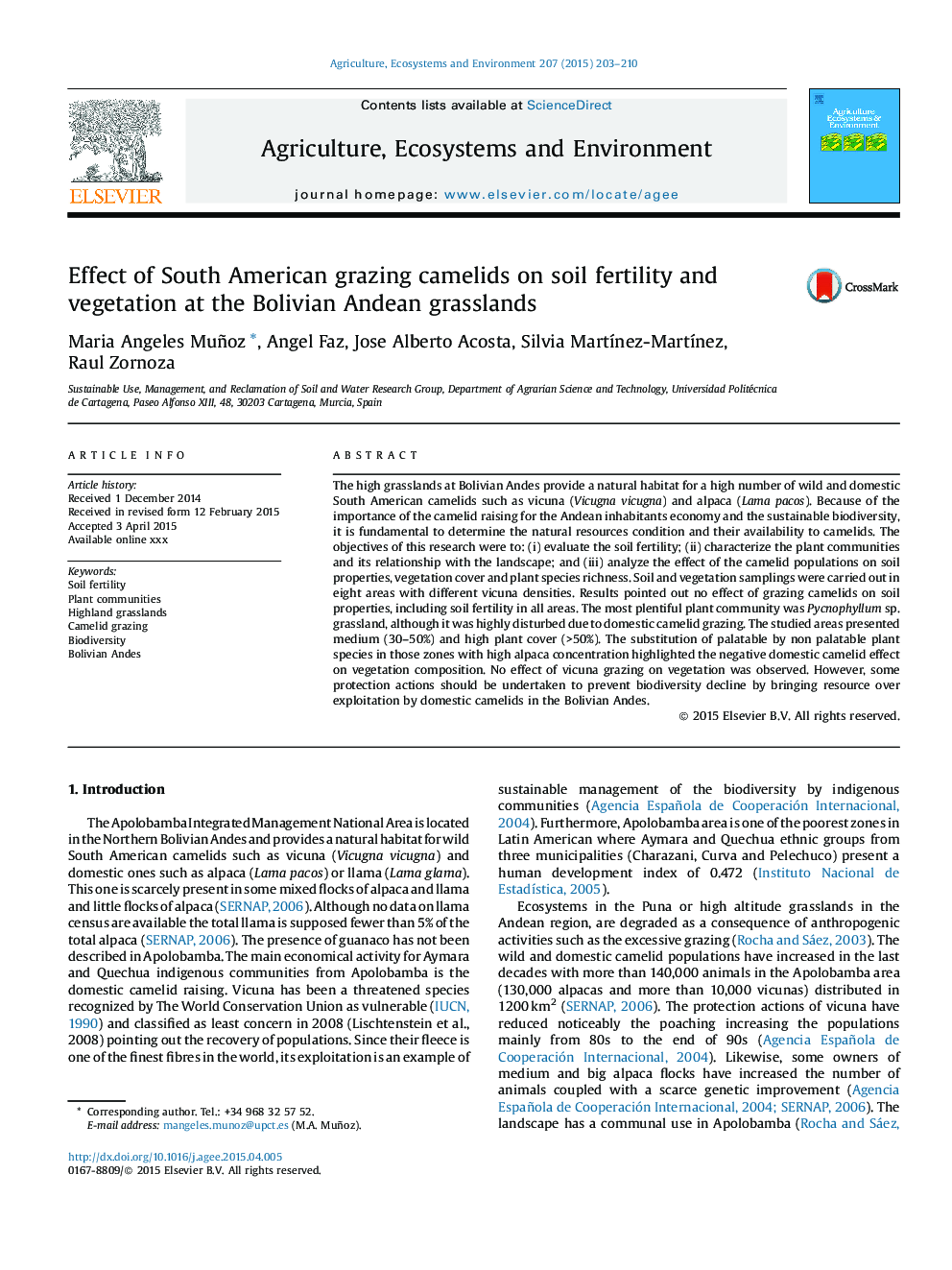| کد مقاله | کد نشریه | سال انتشار | مقاله انگلیسی | نسخه تمام متن |
|---|---|---|---|---|
| 8487733 | 1552045 | 2015 | 8 صفحه PDF | دانلود رایگان |
عنوان انگلیسی مقاله ISI
Effect of South American grazing camelids on soil fertility and vegetation at the Bolivian Andean grasslands
ترجمه فارسی عنوان
تأثیر شتره های شیری آمریکای جنوبی بر باروری و پوشش گیاهی در مراتع اندی بولیوی
دانلود مقاله + سفارش ترجمه
دانلود مقاله ISI انگلیسی
رایگان برای ایرانیان
کلمات کلیدی
موضوعات مرتبط
علوم زیستی و بیوفناوری
علوم کشاورزی و بیولوژیک
علوم زراعت و اصلاح نباتات
چکیده انگلیسی
The high grasslands at Bolivian Andes provide a natural habitat for a high number of wild and domestic South American camelids such as vicuna (Vicugna vicugna) and alpaca (Lama pacos). Because of the importance of the camelid raising for the Andean inhabitants economy and the sustainable biodiversity, it is fundamental to determine the natural resources condition and their availability to camelids. The objectives of this research were to: (i) evaluate the soil fertility; (ii) characterize the plant communities and its relationship with the landscape; and (iii) analyze the effect of the camelid populations on soil properties, vegetation cover and plant species richness. Soil and vegetation samplings were carried out in eight areas with different vicuna densities. Results pointed out no effect of grazing camelids on soil properties, including soil fertility in all areas. The most plentiful plant community was Pycnophyllum sp. grassland, although it was highly disturbed due to domestic camelid grazing. The studied areas presented medium (30-50%) and high plant cover (>50%). The substitution of palatable by non palatable plant species in those zones with high alpaca concentration highlighted the negative domestic camelid effect on vegetation composition. No effect of vicuna grazing on vegetation was observed. However, some protection actions should be undertaken to prevent biodiversity decline by bringing resource over exploitation by domestic camelids in the Bolivian Andes.
ناشر
Database: Elsevier - ScienceDirect (ساینس دایرکت)
Journal: Agriculture, Ecosystems & Environment - Volume 207, 1 September 2015, Pages 203-210
Journal: Agriculture, Ecosystems & Environment - Volume 207, 1 September 2015, Pages 203-210
نویسندگان
Maria Angeles Muñoz, Angel Faz, Jose Alberto Acosta, Silvia MartÃnez-MartÃnez, Raul Zornoza,
